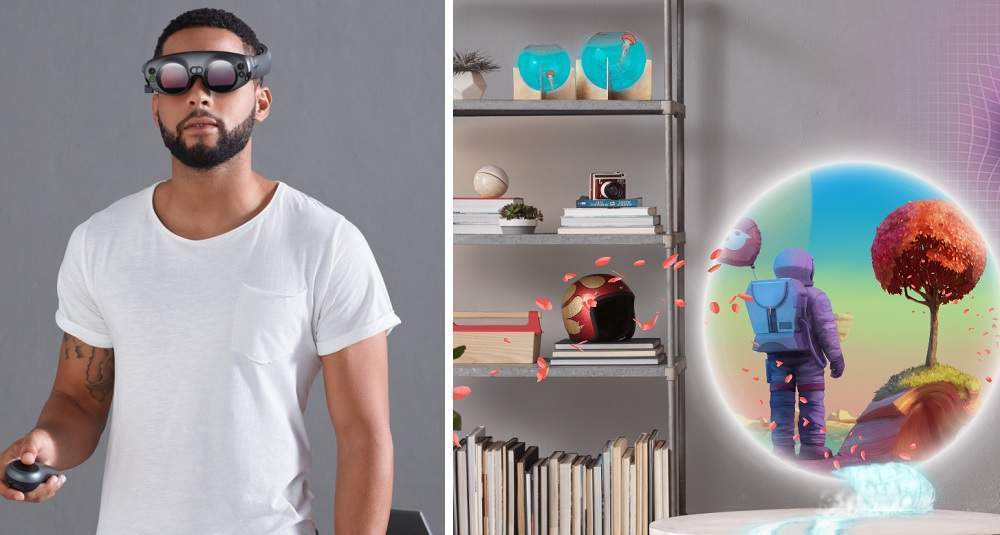
Augmented reality (AR) start-up Magic Leap is making waves in the tech world despite not actually revealing much to the public.
Magic Leap is in talks to raise $400 million through Saudi Arabia’s Public Investment Fund, according to a report in the Financial Times. The start-up already raised $502 million in a previous funding round, led by Temasek, a Singapore-based investment firm.
The FT also reported that Google, Alibaba, and Fidelity are amongst Magic Leap investors, though the start-up has not made any comments on the matter.
But what is Magic Leap and why is it attracting such a high profile string of investors?
What is Magic Leap?
Simply put, Magic Leap is an augmented reality headset.
This means that wearers of the headset see virtual images projected into the real world. One of the most successful and well-known uses of the technology so far has been in the popular mobile phone game, Pokémon Go.
How well do you really know your competitors?
Access the most comprehensive Company Profiles on the market, powered by GlobalData. Save hours of research. Gain competitive edge.

Thank you!
Your download email will arrive shortly
Not ready to buy yet? Download a free sample
We are confident about the unique quality of our Company Profiles. However, we want you to make the most beneficial decision for your business, so we offer a free sample that you can download by submitting the below form
By GlobalDataPopular social media app, Snapchat has also dabbled with AR in some of its filters and stickers.
Aside from that, AR has struggled to make the same impact as its better-known cousin, virtual reality (VR) which sees the user immersed into a virtual world through the headset.
Magic Leap’s technology is a lot more powerful than that found on most mobile phones — powered by a small computer which users wear at the hip. The computer is attached to the AR goggles and a wireless controller.
The company describe its goggles as containing digital lightfield technology. Meaning that, with the help of an array of sensors, Magic Leap’s goggles will be about to make out specific surfaces, distances, and physical spaces.
This will allow the goggles to accurately map virtual objects into physical space.
For example, the goggles could detect a real-life table and place a virtual character onto it, without the character moving from the table’s boundaries.
Magic Leap has allegedly been working on its debut device, the Magic Leap One for around eight years.
It will release the Creator Edition of the device “early 2018”. Fundamentally, this is not a consumer product. As it stands, Magic Leap has no applications or games for their device.
The Magic Leap One Creator Edition is, for all intents and purposes, a development kit. It will allow creators and designers to begin making their own applications and games for the Magic Leap platform.
Could Magic Leap make AR the next big thing?
As it stands, Magic Leap has a glossy, futuristic-looking hunk of nothing. Despite some impressive tech demonstrations, Magic Leap has kept its technology very much off the record. And without any apps or games there’s no way to tell the actual quality of the product.
Still, on the plus side, those tech demos do look mightily impressive. Plus, the Magic Leap One itself is a handsome piece of kit — it looks considerably less bulky and much easier to wear than the headsets made by the current leader in the VR field, Oculus.
On the other hand, the biggest challenge that VR technology has faced is the high price point. That’s especially in light of the technology being relatively young and untested.
When it launched, the Oculus Rift retailed for $599. In addition to that price, consumers would also have to own a high-end computer to stream content to the device. Consumer interest was sluggish so in 2016 Oculus slashed the price to $399.
Even with the discount, the device sold just 355,000 units in the year.
Oculus’ owners, Facebook announced in 2017 that it will be releasing a pared down version of the device, the Oculus Go, for even less specifically to get people into VR.
The Financial Times suggests in its report that the Magic Leap One Creator Edition will cost over $1,000 per unit. If that price point continues through to consumer sales, the device could struggle to win the hearts of customers, no matter how impressive its tech is.
What if Magic Leap do succeed in getting customers?
Assuming that Magic Leap can make its AR kit an attractive proposition to consumers, the tech could go far.
Previously, AR technology has mostly been confined to gaming. However, Magic Leap is aiming to make the tech more central to every day life. On its website the company suggests various applications for the AR technology outside of gaming.
These applications include allowing online shoppers to examine products in 3D from the comfort of their home, displaying multiple screens at once to show extra information during television events such as sports broadcasts, AR conversations allowing people to be virtually present in the room with others during long-distance calls, and finally using the goggles to create artistic pieces.
Magic Leap has also shown of a tech demo touting their partnership with LucasFilm.
In the demo, the user watches an exchange between Star Wars characters C-3P0 and R2-D2. This definitely looks like evidence that the technology could see use as a platform for storytelling and maybe even short-film.
In addition, there will be applications for gaming with the Magic Leap.
Magic Leap still faces plenty of major hurdles but if the final product is as impressive as early looks suggest, it could certainly go far.







